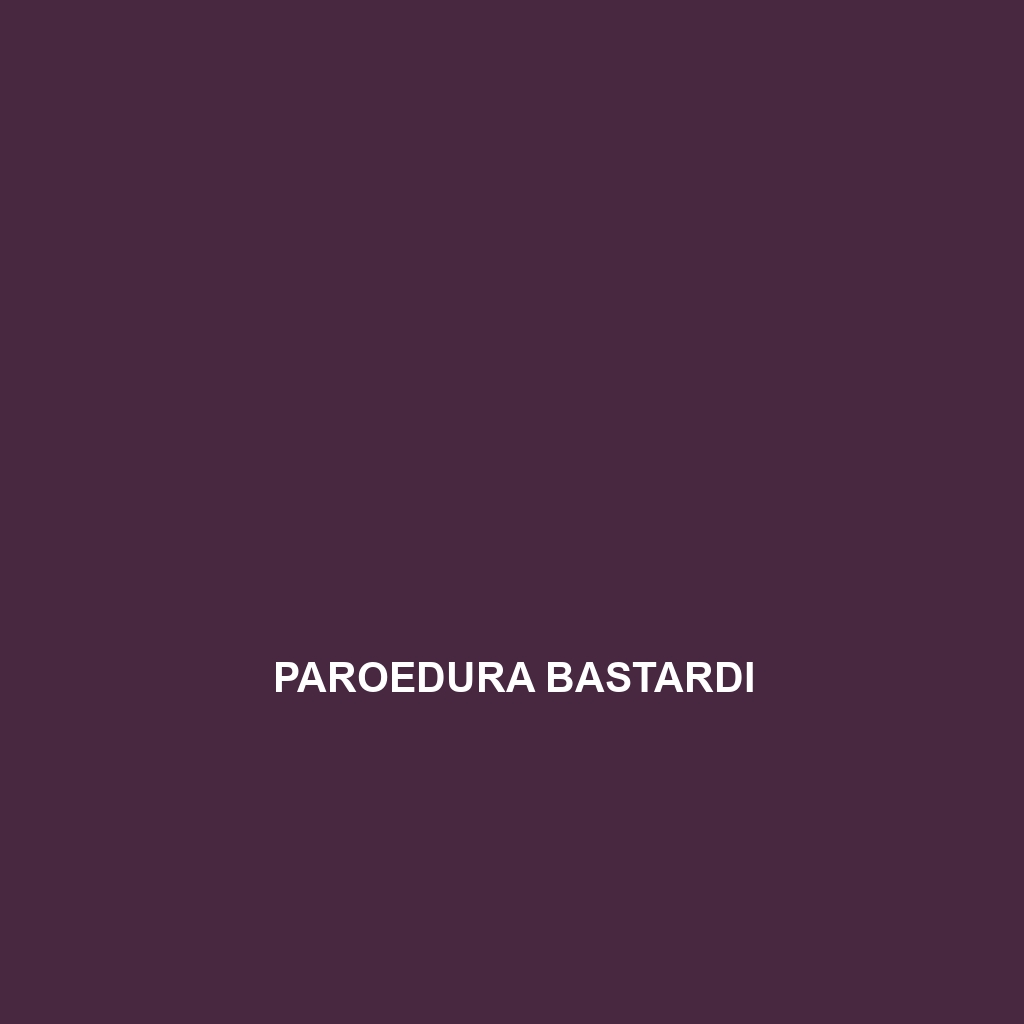Common Name
Paroedura bastardi
Scientific Name
Paroedura bastardi
Habitat
Paroedura bastardi, commonly known as the Madagascar ground gecko, is primarily found in the rich and diverse habitats of Madagascar. These geckos thrive in rainforests and dry deciduous forests, where high humidity and warm temperatures create an ideal environment. They are also observed in sparse savannas and agricultural land, showcasing their adaptability to varying environmental conditions as long as shelter and food sources remain available. The unique flora and fauna of Madagascar provide a range of ecological niches, making it a critical area for biological research and conservation.
Physical Characteristics
Paroedura bastardi exhibits distinctive physical features that make them easily identifiable. Adults typically reach a length of about 15 to 20 centimeters. Their bodies are slender, with smooth scales and a robust tail that can be regenerated if lost. The coloration varies from light beige to grayish tones adorned with dark spots or stripes, providing effective camouflage in their natural surroundings. This stunning coloration allows them to blend into the leaf litter and forest floor they inhabit, reducing visibility to both predators and prey. Younger geckos are often more vibrant, which can help to attract mates as they mature.
Behavior
Known for their nocturnal behavior, Paroedura bastardi are primarily active at night. During this time, they engage in foraging for food, demonstrating remarkable agility and climbing capabilities. Social interactions among these geckos often include territorial displays and mating rituals that can be fascinating to observe. Males engage in elaborate courtship behaviors to attract females, which may include head bobbing and physical displays. They communicate using body language, specifically during the mating season, which is another intriguing aspect of their behavior.
Diet
Paroedura bastardi is classified as an insectivore, primarily feeding on a diet consisting of insects, spiders, and other small invertebrates. Their keen eyesight enables them to hunt effectively in low light conditions. They also exhibit opportunistic feeding habits and may consume fruit and nectar, showcasing a degree of omnivorous behavior. This varied diet not only reflects the gecko’s adaptability but also its role in the ecological balance, as they help control insect populations in their habitats.
Reproduction
The reproductive cycle of Paroedura bastardi is fascinating, particularly their mating season, which typically occurs during the wet months in Madagascar. Females can lay between two and four eggs at a time, often hidden in nests in soil or leaf litter, which provides them protection. The incubation period lasts about 60 to 90 days, after which hatchlings emerge. Post-hatching, the young geckos are largely independent, although some parental care may occur, particularly in the early days after hatching. This reproductive strategy ensures a higher survival rate for the offspring in the challenging environments that they inhabit.
Conservation Status
According to the IUCN Red List, Paroedura bastardi is currently listed as Least Concern. However, ongoing deforestation, habitat destruction, and the illegal pet trade pose significant threats to their populations. Conservation efforts are increasingly vital to preserve their natural habitats and ensure the survival of this species in the wild. Various organizations are working towards habitat restoration and creating awareness about the ecological importance of these geckos within Madagascar’s unique ecosystem.
Interesting Facts
One interesting fact about Paroedura bastardi is their ability to change color slightly to match their surroundings, a fascinating adaptation that enhances their camouflage. Additionally, these geckos have strong adhesive toe pads that allow them to climb vertical surfaces effortlessly, giving them a significant advantage when navigating their environment. Furthermore, their regeneration ability for lost tails is not only a survival mechanism but also a fascinating area for scientific research into limb regeneration.
Role in Ecosystem
Paroedura bastardi plays a crucial role in the ecosystem by helping to control insect populations. Their feeding habits contribute to ecological balance by regulating the numbers of various insect species. As prey for larger predators, they also hold a vital place in the food chain. This interdependence highlights the importance of protecting these geckos and their habitats, as their decline could have ripple effects on both the predators that rely on them and the prey they hunt.
This article format includes detailed descriptions, uses SEO-friendly terms, and is structured for clarity and ease of reading while covering all necessary aspects of the species.
